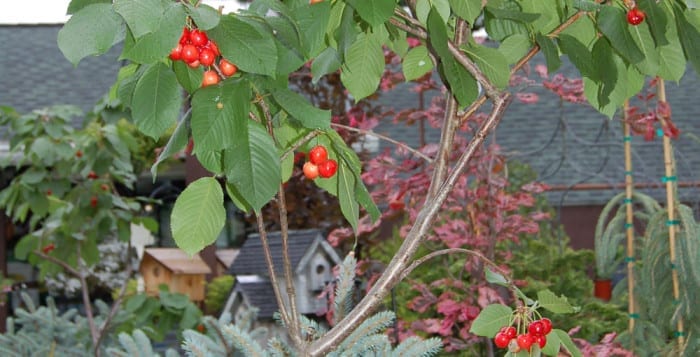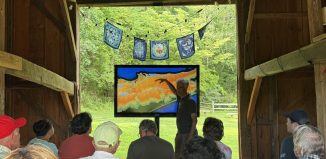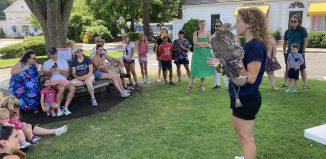Growing cherry trees on Long Island
By Ellen Barcel
When I was a kid, I used to go with my father and aunt to gather wild cherries. Cherries can, of course, be used to make a number of edibles, but my aunt used the cherries to make a cherry cordial. Unfortunately, because I was a kid, I never got to taste it, but all the adults claimed it was quite good.
If you’re interested in growing cherries, autumn/early winter is the ideal time to start. Planting trees in the fall allows the roots to settle in and continue to grow even into December until there’s a hard freeze. It’s like you’re giving the tree a head start for next year.
Wild cherries
There are a number of cherry species that are commonly known as wild cherry. The one growing wild in this area is Prunus serotina, a native of eastern North America. It grows as far north as Canada and south to central Florida and Texas. According to the U.S. Forest Service it’s the only cherry tree that grows under such a wide range of climate conditions. Most are more limited.
Other names for this tree include black cherry, wild black cherry and rum cherry. Interestingly, cherries are in the rose (Rosaceae) family, a family that includes apples, almonds, pears, peaches and a whole lot more.
Wild cherries are eaten by birds and small mammals. With their white spring flowers, the trees are frequently grown as specimen trees. Since the cherries are not very sweet, they are generally not eaten right off the tree. Instead, they are used for jellies, jams, cherry pie and even a chilled cherry soup.
Sweet cherries
What if you’re more interested in growing sweeter cherries, cherries that you can pop into your mouth and savor right in the garden?
Well, there are many varieties of cherry trees that produce sweet cherries. Perhaps the most well known is the Bing cherry (P. avium ‘Bing’), sweet and flavorful with a deep garnet to almost black color. The tree can reach a height of 30 to 35 feet. White spring flowers in April give way to cherries in June. The tree needs full sun and is adapted to most soil conditions. It does well in U.S. Department of Agriculture hardiness zones 5 to 9 (Long Island is 7). One of the disadvantages of this tree is that it requires another cherry tree for pollination. This can be almost any variety of cherry tree, but it does mean that space is taken up with two, not just one, tree.
Another sweet cherry, Lapins (P. avium ‘Lapins’) is self-fertile, so you don’t need another tree for pollination. It’s a smaller tree, another plus for Long Island gardens that don’t always have enormous amount of space for trees. It, too, does well in zones 5 to 9.
When you go shopping for cherry trees, make sure you check the hardiness zones and future height as well as whether the tree is self-fertile or requires a pollinator. A soil pH of anywhere from 5.5 to 8.0 is suitable, although 6.0 and up is more ideal. Always test your soil first and adjust the pH as needed.
Flowering cherries
Kwanzan flowering cherry (P. serrulata ‘Kwanzan’) is grown for its gorgeous spring flowers, not fruit. It does well in a wide variety of soil pH levels but does require sun to maximize flowers. Its limited life span, 15 to 25 years, may be seen as a negative.
Weeping cherry (P. subhirtella ‘Pendula Plena Rosea’) is another one grown for its shape and flowers not its fruit. It grows in zones 5 to 8 and is generally a small tree, 20 to 25 feet tall.
General information
Cherry trees grow in a wide range of soil pH levels, but this may vary depending on the variety of tree you select. If your soil is very acidic, then add lime to make it sweeter. Remember, once you start liming the soil, you must continue since in time, it will revert to what it tends to be naturally.
They all need a well-drained soil, ideal for Long Island since most of our soil is sandy and therefore drains well.
Ellen Barcel is a freelance writer and master gardener. To reach Cornell Cooperative Extension and its Master Gardener program, call 631-727-7850.







